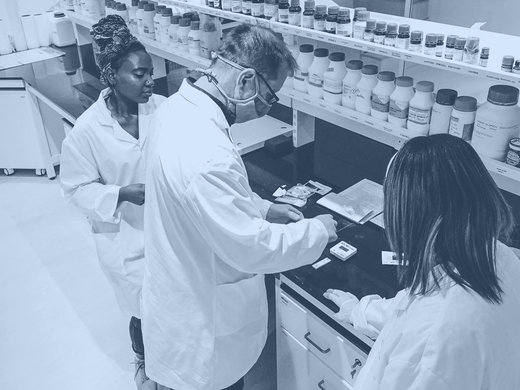It has been said that a crisis brings out the best and the worst in people. This pandemic is no different. So many people and so many nations have come together in hopes of finding solutions more quickly by sharing and pooling their resources. They have clearly put the collective good ahead of their own interests. However, others have acted with myopic and unconscionable self-interest, seeking to take advantage of a crisis to further their own agendas. These contrasting behaviours are most prominently displayed in the realm of intellectual property (“IP”).
IP rights have sparked global discourse, especially in the area of patents, because they apply to everything from the medications and respirators for those who are sick, to the protective equipment required by health-care workers, to the vaccine(s) which we will all, ultimately, require. In the early days of the pandemic, we heard stories of IP impeding progress in fighting the pandemic. For example, when a hospital in Chiari, Italy, began to run out of valves for its respiratory machines and the manufacturer was unable to keep up with the demand, volunteers who wanted to 3D print the valves were not only refused help from the manufacturer but were allegedly threatened with a patent infringement suit. There was also a patent infringement lawsuit by a shell company against a company that makes COVID-19 tests.
However, since those early days, many businesses, researchers, universities, and governments have taken extraordinary actions to ensure that IP does not get in the way of helping people through this pandemic. For example, many IP owners have now waived their patent rights to encourage others to develop and manufacture the necessary supplies to fight the novel coronavirus. The director general of the World Health Organization has endorsed the creation of the COVID-19 Technology Access Pool to facilitate the research and manufacturing of essential products and treatments. The pandemic has disrupted the status quo and has spurred new forms of partnerships between the private sector and universities, colleges and research institutions creating new models for commercialization.
Specifically, there is a clear recognition of the need for collaborative approaches to patents and know-how where research and development is publicly funded, whether in whole or in part. These collaborations should ensure that the value of the R&D is fairly shared amongst contributing parties—public and/or private. The private sector should be held to strict obligations around making publicly funded vaccines and cures available to the public on an expeditious and affordable basis.
There are a number of IP sharing models that can be explored in this country. For instance, the University of Oxford adopted an IP policy that helps forge partnerships around the COVID-19 vaccine. This model balances competing interests in a fair and equitable way by contemplating royalty-free licensing during the pandemic and a royalty-bearing licence after the pandemic. Another example is the Open COVID Pledge. This model was developed by scientists, technologists, and lawyers to encourage universities, researchers, and companies to make their IP available on a royalty-free basis for the purposes of ending the “COVID-19 pandemic” and minimizing its impact. In both these cases, the public-sector researchers and institutions retain the ability to benefit commercially from the research if and when the time is right.
Canada is already exploring a variety of models to encourage greater collaboration and sharing of IP. For instance, as part of the national IP Strategy the Canadian government has already announced the Patent Collective Pilot Program for the data-driven clean technology sector. It may well make sense for Canada to follow the lead of some European countries and establish a sovereign patent fund. This would be a fund for the purposes of pooling health care related patents (particularly those that are publicly funded) or patents that might well fall into the wrong hands as companies that have struggled through this crisis may no longer be able to afford to prosecute them or maintain them. In addition, it is perhaps more important now, than ever before, to have an independent organization tasked with helping businesses strategically leverage their IP.
There is little doubt that IP, especially patents, should not be an impediment to forging solutions to the global crisis that we are all facing. It is important that Canada’s policy-makers continue to explore models for facilitating collaborative development and access to essential medicines, treatments, technologies and other innovations. However, whatever the approaches, they must be directed towards the future so that the publicly funded R&D being generated at this time of crisis, especially at universities and colleges, can also realize a reasonable and fair commercial return for Canadians once the crisis has passed.
This article first appeared in The Hill Times.



